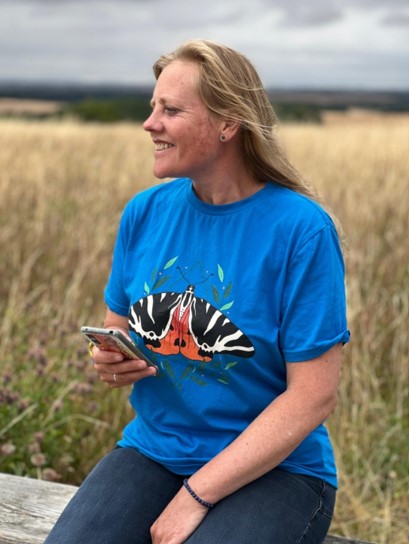Hear from Dr Zoë Randle, Senior Surveys Officer, and moth-fan on why it is that moths are declining, and what BC is doing to help reverse this. The role of these magnificent creatures in our ecosystem is also discussed, as well as what Zoë thinks of people who aren’t interested in them!
What is causing the decline of moths?
The main drivers of moth declines are habitat loss and climate change. Habitat loss includes the degradation of habitat or the complete destruction of it through agricultural intensification, hedgerow removal, development, and change of land-use management.
Nutrient enrichment through nitrogen deposition and run-off is polluting our soils, rivers, and streams. This is affecting moths indirectly because the nitrogen deposition alters the chemistry,
structure, and the composition of plant communities. This can affect the distribution of foodplants for moths.
Climate change is affecting moths both positively and negatively. It has been beneficial to many species as it enables them to move further north in the UK as our climate warms, however, the moths can only move further north if there is available habitat for them to move into and live in. Declines in the Garden Tiger have been attributed to climate change as our winters are now wetter and warmer than they used to be. Climate change is also affecting emergence times, some species emerge earlier on in the year than they did in the 1970s, whilst some are emerging later. The changing of emergence times for moths are not happening in isolation. The phenology of foodplants, parasitoids and predators is changing too, so there is potential for mismatching of timings. Some species are also producing multiple broods per year. In addition to this the incidence of multiple broods is becoming more common further northwards in the UK.
Another key thing affecting moths, particularly nocturnal moths, is light pollution. This can have several affects. There’s direct morality as the moths can get burnt and incinerated by the heat from the lightbulbs. There is also increased predation by bats. Feeding and breeding activities of moths are disrupted so rather than getting on with the important job of feeding and breeding to produce the next generation they’re just whizzing around the lightbulb. Light pollution has been shown to reduce the number of moth caterpillars in grass verges and in hedgerows compared to comparable unlit roadside habitat.
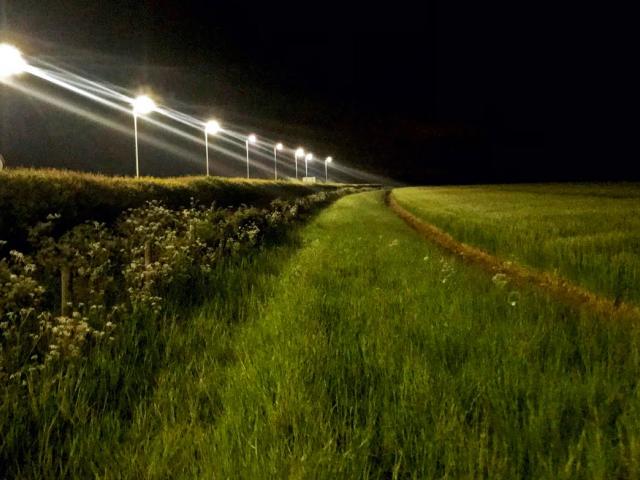
Artificial light at night has also been shown to disrupt pheromone production in female Cabbage Moths, reduce mating in Winter Moths, decrease caterpillar growth in Rustic Shoulder-knot and inhibit feeding in adult moths such as Common Marbled Carpet.
So, there is a potent cocktail of drivers interacting both positively and negatively which are affect moth numbers and distributions.
What does BC do to help save moths?
There are thousands of people across the UK who record moths in their gardens or out and about in the countryside. These moth recorders submit their sightings to their County Moth Recorder. The County Moth Recorder collates the sightings for their area and checks the accuracy of them. These local datasets are then submitted to Butterfly Conservations National Moth Recording Scheme (NMRS). The NMRS database currently holds some 35 million moth records from across the UK, Channel Islands and Isle of Man. These data underpin our conservation work, ultimately, you cannot conserve something unless you know where it occurs. The NMRS dataset is used to enable us to develop moth conservation initiatives in places and for species that need conservation action. For example, our Kent’s Magnificent Moths project is helping to save some of the UK’s rarest moths. There is a suite of species being targeted and focussed on to do habitat improvement and re-creation work. Another thread of Kent’s Magnificent Moths is to engage local communities and farmers to raise their awareness of moths and what they can do to help.
We carry out targeted surveys and ecological studies to better understand the species requirement of priority moths e.g., Narrow-bordered Bee Hawk Moth, Argent & Sable, and Sussex Emerald.
The NMRS dataset is used to produce distribution maps, distribution trends, atlases and State of Reports. The dataset is also used by scientists and researchers to further our understanding of the patterns of change seen in our moth fauna
What is the role of moths in our ecosystem?
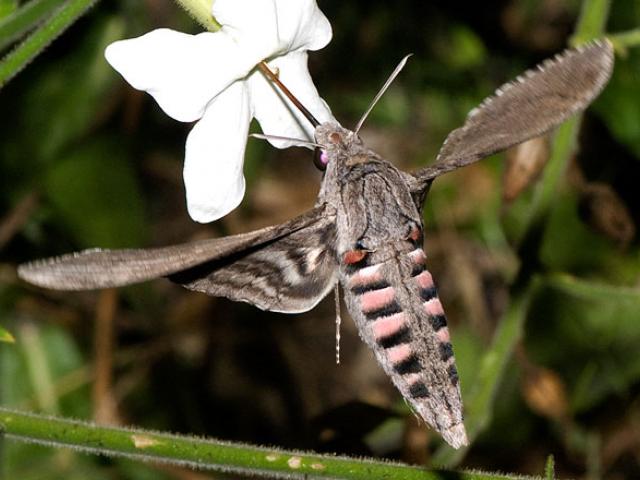
Moths have got a vital role to play in our ecosystems because they are really important, there is a growing body of evidence suggesting they’re important pollinators of plants, I like to think of them as the bees of the night-time. Everyone knows bees pollinate but moths are out there doing their bit at night pollinating as well. They’re also important food for lots of creatures, bats feed on adult moths, dragonflies feed on day-flying moths, they can snatch them out of the air and munch them up. Caterpillars are really important food for birds as well, Blue-tit chicks eat an estimated 35 million moth caterpillars a year.
They’re also indicators of the health of our environment. Because they have short life cycles, they are really sensitive to environmental change, they have been likened to the canary in the coal mine, they’re an early warning signal. Moths (and butterflies) are some of the most closely studies insects, and their changing in their population and distribution trends are likely to be mirrored in the less well studied groups.
How do you think we can engage people that lack interest or understanding of moths?
People need to get involved in some Butterfly Conservation outreach and engagement projects and get in touch with their local Butterfly Conservation Branch to see what events are happening in their area. Getting in touch with their County Moth Recorders is a great way to get into moths too. Quite often County Moth Recorders will run public moth events to show members of the public the great beauty and diversity of the amazing moths that we’ve got in the UK. They will often loan out moth traps to beginners to get them started with moth recording and provide mentoring.
In partnership with Atropos and the UK Centre for Ecology and Hydrology, Butterfly Conservation, runs Moth Night. This is the annual celebration of moths and moth recording. Public moth events are organised and run all around the UK, providing the perfect opportunity to get up close and personal with moths and to learn more about them.
Let’s not forget that there are also plenty of day-flying moths as well, the Scarlet Tiger or the Jersey Tiger, Cinnabar are all species you can see out and about in the countryside or even in the garden. The caterpillars need to be remembered as well because there are plenty that live in our gardens that we can go on a caterpillar safari and see what we can find.
What would you say to people that say they’re not interested in moths?
They haven’t lived! They don’t know what they’re missing basically. I didn’t know much about moths when I came to Butterfly Conservation but now absolutely love them; the colouration, patterns, the beauty of them, the importance of them, all of that is just absolutely amazing.
I set up a moth trap for my youngest brother when he was 10 years old. He thought it was going to be “really boring”! He was given the job of switching on the trap and illuminating the garden. In the morning we went to the trap…there were loads of moths including a Buff-tip. He was astonished “Oh my God, this moth is amazing, I’m going to call him Bob”’ To this day, 15 years on, he still remembers the Bob the Buff-Tip!
Many people think that moths are boring, jumper munching pests, (very few, less than 0.05% eat clothes by the way!) but once you open your eyes and experience them people realise that moths are absolutely amazing!
If you were a moth what would you be?
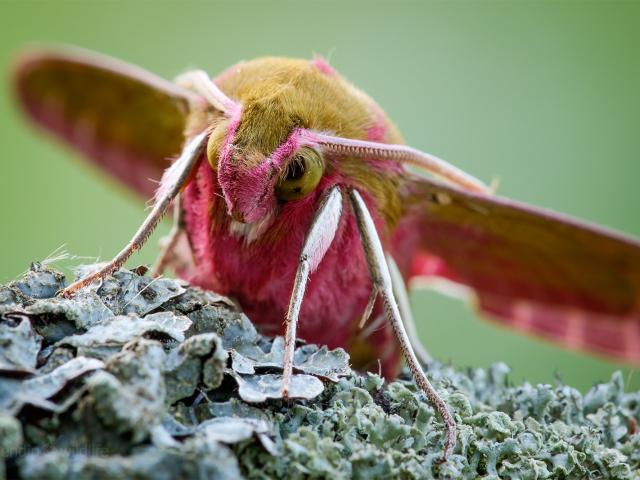
I’d have to be the Elephant Hawk-moth it’s my favourite moth because it’s pink and green and looks tropical. They’re quite big and fluffy and they fly in the height of summer. The moth gets its name because the caterpillar looks a little like an elephant's trunk. The caterpillar has got big black eye spots on the side of its head which makes it look a bit like a snake, so it can use this mimicry to frighten potential predators.
Take action
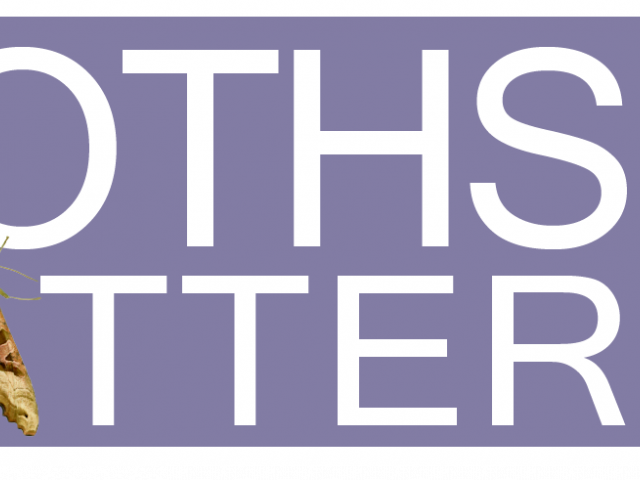
Worryingly, moths have declined in abundance for the last 40 years, with three species becoming extinct as recent as 2000. If you’re moth-mad like Phil, or want to contribute to our work in saving moths, please download the guide available to celebrate #MothsMatters 2022.


